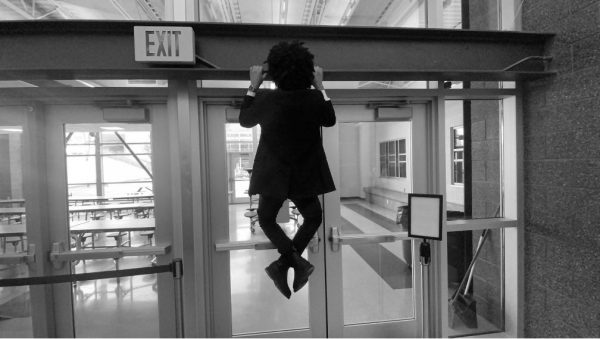Gen Z Dating
“He added me on Snapchat!”
“I can’t believe he hasn’t snapped me back yet”
“OMG, he snapped me back how should I respond?”
We’ve probably all encountered a situation that went along these lines, whether personally or through one of our friends. The latter example would probably be followed by suggestions of what angle the snap should be taken in, if a caption should be added, and whether it would be appropriate to include an emoji. All this effort is to keep one’s list of Snapchat friends long, and flirt with someone one’s interested in.
The process of dating today is drastically different from that of our parents.
Baby Boomers’ and Generation X’s dating prospects were limited to the peers of their schools, towns, and neighborhoods. They would meet each other at school, at parties, or sometimes even at church. After taking an interest in each other they would exchange phone numbers and call each other, and probably talk all night. They would then go out on dates, to the beach or to a restaurant, or to the movies.
Dating norms have switched from going to the movies to ‘Netflix and Chill’, from no kissing until the 3rd date to hookups, and from marriage to cohabitation.
Today’s young relationships look very different. They are much more ambiguous and complex, and many relationships young adults engage in are superficial and short-term.
The main difference between young adults today and those of forty years ago is the technology available to them. Millennials and GenZers have only known a world where the internet exists, and where texting, emailing, AOL ChatRooms, Facebook, Twitter, Instagram, Tinder, or Bumble have facilitated their relationships, and have connected them to more people than ever before.
So, has technology made relationships more trivial, or has it facilitated deeper connections?
Technology has drastically changed the dating landscape. Teens and young adults now flirt through text and Snapchat, and dating apps have made partners more readily available than ever before.
Roughly 44% of PCHS students who have been in a relationship reported having started talking to their partner over text or over Snapchat. 38.9% said that texting was the primary way of communication, and an equivalent percentage said the primary way of communication was Snapchat.
According to a 2015 Pew Research study, 50% of teens showed romantic interest by friending someone on Facebook or another social media, 47% of teens showed romantic interest by interacting online such as liking or commenting.
Apps such as Facebook, Snapchat, or Instagram have made it possible to follow, friend, or add hundreds of people without needing to know them closely or even at all.
Dating apps such as Tinder, Bumble, or Match.com have made sexual partners more readily available. Through Snapchat or Instagram, interacting with potential partners has become easier and more casual. For many, these apps and websites have fostered a culture of short-term gratification, lack of commitment, and quick replacement; this is what we call “hookup culture.”
At the same time, the United States along with other western countries is experiencing declining birth and marriage rates, signaling a decline in traditional, long-term, and committed relationships. Technology only seems to be making the problem even worse.
“I think social media empowers people to connect in ways we’ve never seen before but I also think that it fuels short-term gratification,” said Noah Canada, a sophomore at PCHS.
While it might have been partly caused by pop culture and a relaxing of social and sexual norms, technology has without a doubt facilitated hookup culture.
“I think it certainly helped with true relationships but I think it’s also made it so you don’t have to have a full-on relationship, you can like do something for a night,” said Senior Nina Ganyard, who is currently in a relationship.
Is technology diminishing meaningful, long-term relationships while fostering short-term ones?
According to a 2012 APA article “between 60 percent and 80 percent of North American college students have had some sort of hookup experience,” and according to the Saratoga Falcon, a high school newspaper, “approximately 45 percent of Tinder users say they don’t use the app to look for long-term relationships.” For reference, Tinder has 57 million users as of 2021.
Dating apps like Tinder have created an infinite amount of choice for men and women, and are seen as apps where casual flings and hookups are readily available. These apps have mass-produced young adults that only engage in short-term relationships.
GenZers, unlike Millennials, are less likely to participate in hookup culture, especially those under 20.
A study published in the journal of Child Development which analyzed surveys from 1976 to 2016 found that “today’s teens were found to be less likely to drive, work for pay, go on dates, have sex, or go out without their parents.”
Teenagers are more likely to stay at home and interact with technology rather than go outside with their peers. So has technology isolated them even more?
Another cause of this apparent isolation has been hypothesized to be helicopter parents. With smaller families, parents have fewer children to look after and can become overprotective, especially if they have only one child, which is more common today than in our parents’ generation.
An overreliance on the comfort of home, doting parents and the phone has dented what used to be a universal teen experience of dating, independence, and risk-taking. The Covid-19 pandemic has further isolated teens.
Covid has made real interactions even scarcer. In March 2020 schools across the U.S. switched to online learning, as the first quarantine was put into effect. Everyone, including teenagers, was locked in their homes. Social media became their only connection to the outside world. The use of social media and entertainment apps spiked, especially TikTok5, which became an emotional buoy and a relief to boredom for thousands of teens, as they missed out on real-life experiences such as prom, graduation, or simply hanging out with friends.
Social media became the center of teens’ lives while in lockdown. They used apps such as TikTok to document their remote learning experiences and interact with others. During Covid-19, TikTok’s content transformed from lip-syncing and dance videos to creative, comedic, and lifestyle videos that depicted life in quarantine. Most TikTok videos were fun and lighthearted and provided hours of distraction and amusement to isolated teens. Buzzfeed even wrote an article on the most viral dances of quarantine, and YouTube creators made endless playlists of “quarantine TikToks.”
During quarantine, the only way teens were able to stay in touch with their friends and their significant others was through technology (texting, Snapchat, Instagram). A study done by BCM Public Health, an independent company that compiles research journals, unsurprisingly found that “Youth also spent less time in person with their partners during the pandemic than before.” The study also concluded that although they were physically distanced, teens still continued to engage in relationships through the use of technology.
“I think [my relationship] could’ve deepened even if there wasn’t technology, it just would have taken like double the time,” said Ganyard.
“I think it often begins on social media because it’s easier to connect with people with a screen in between you, instead of directly speaking with them,” said Canada.
The pandemic showed us that our phones were very powerful in maintaining relationships. Without technology, teens would’ve been more isolated from the world and from their friendships and romantic relationships.
Thus, even though social media and technology have facilitated a culture of superficial relationships and quick gratification, they’ve enabled us to deepen our relationships and maintain connections, even when we are divided by space.






